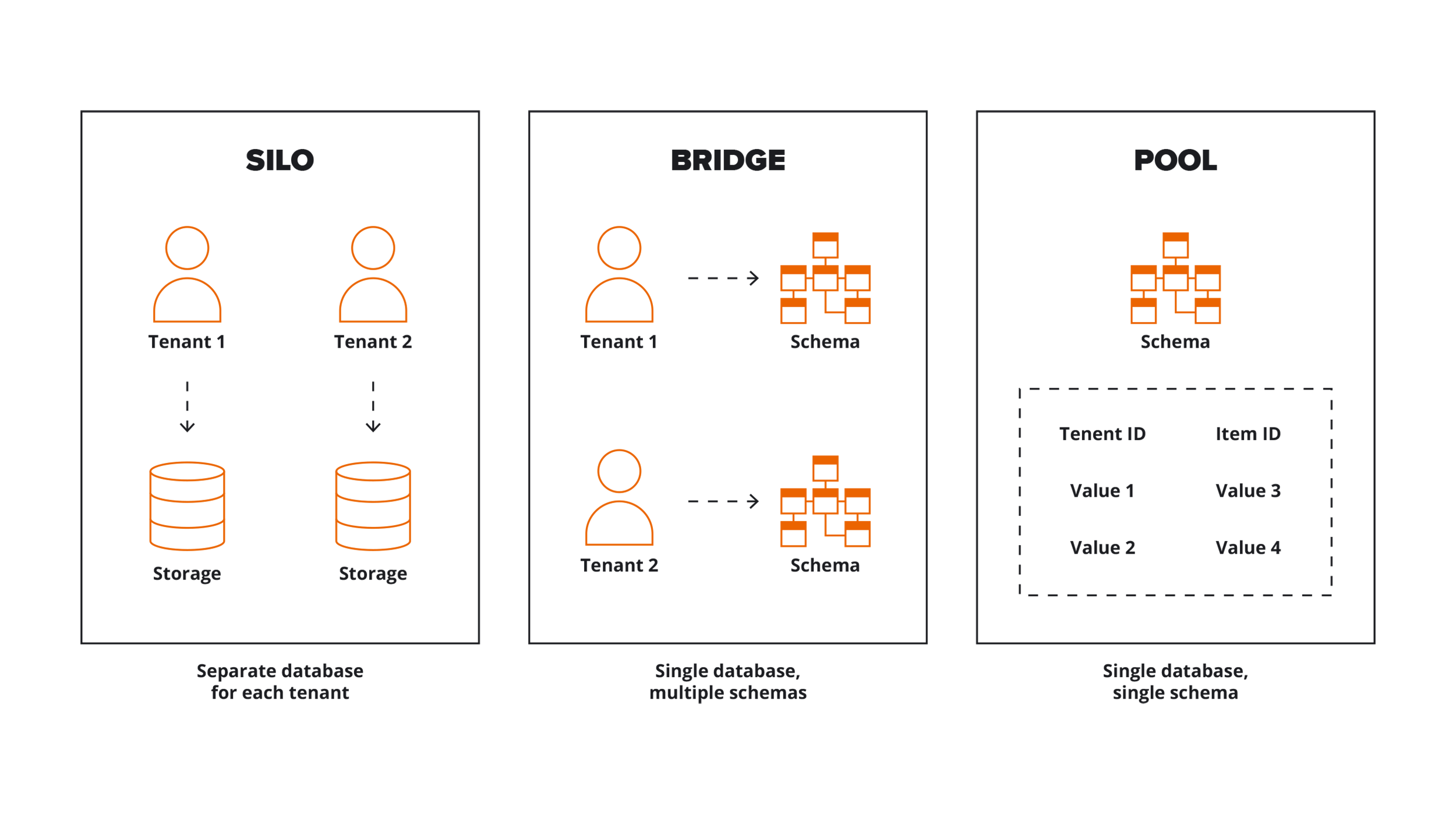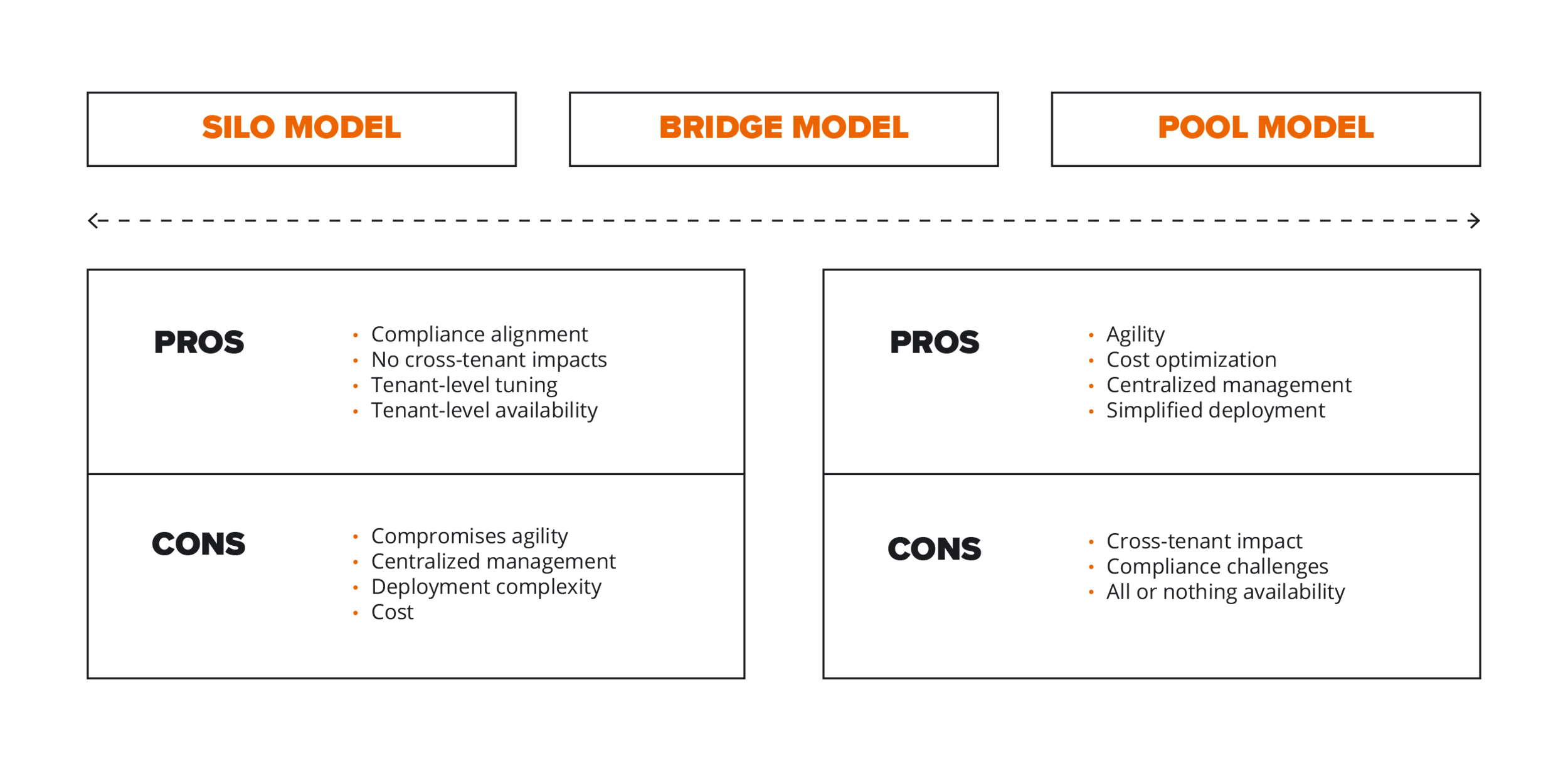Amazon Web Services (AWS) provides software as a service (SaaS) consumers a variety of storage solutions with individual approaches to security, provisioning, managing, and more. The multi-tenant strategy a company requires often depends on the way that each service represents, indexes, and stores data. When implementing a successful strategy, the developed SaaS solution must align with the storage technologies that best match the company’s storage needs.
Common SaaS patterns on AWS
The most frequently used SaaS patterns with AWS include silo, bridge, and pool partitioning models. Each SaaS partitioning model contains advantages and disadvantages.
Architects and their end-users have the opportunity to align SaaS needs with modern storage solutions. Users must consider how the SaaS AWS storage solution fits within current configurations. As when implementing any new technology, the primary goal is to understand and meet current tenant partitioning needs, then match those requirements with the best-of-breed storage strategies and solutions.
SaaS storage partitioning models
Each of the modern partitioning models has diverse management, accessing, and tenant data separating approaches, as shown here.

Silo model
In a silo storage model, developers entirely isolate tenant data from other tenant data.
All the parts of such tenants are unique for the client, meaning each tenant has separate representation, monitoring, management, and security.
Bridge model
A bridge model is most often considered a compromise-type model for SaaS. While the model still offers separation of the tenants, a single database stores all data. Division in a single database is achievable by creating different tables with different tenants, managing the access rights to the tables with data representation.
Pool model
A pooled model enables tenants to share all resources. As one database stores all data, all tenants can share a schema. The pool model approach has additional requirements to access control to the tenant data. To simplify provisioning, management, and updates of the SaaS solution, use pooled models. Agility and continuous delivery become increasingly achievable.
Areas of consideration
Although there are pros and cons of each model, often the preferred choice is not immediately clear to fully align with the models of tenant isolation. Using a trusted partner often creates a clear path to a more successful implementation.
When selecting a storage model, architects must take into account varying factors. A silo model is often preferred with migration from existing infrastructure because it is the easiest way to migrate without changing the SaaS application code. However, the pool model is understood to be very efficient and agile when building an environment to embrace rapid and continual releases. Either way, the primary goal must be to understand the combination of business and technical factors, which will be driving the selection of strategy.

In conclusion
As understood by many, the storage needs of SaaS architecture can be challenging. Users must carefully consider which combinations of SaaS malty-tenancy storage options are needed, based on business needs, their customers' needs, and other factors.
As no one solution works for every company, multiple solution offerings are available to best suit the needs of the individual company. While some models align better with basic concepts, some are more complex, and some of the AWS storage technologies are better positioned to support malty tenancy. For example, building a siloed model on Amazon Relational Database Services (RDS) is often viewed as less sophisticated than building in DynamoDB.
Users must carefully consider how multi-tenant application architecture and variety needs fit within the AWS storage technologies. Then, take into account how tenants will access the data. AWS provides a large number of storage services, which helps to solve any customer SaaS multi-tenant storage needs. To learn more, read the whitepaper SaaS Storage Strategies: Building a Multitenant Storage Model on AWS. For more information and to address your AWS needs, contact SoftServe today, an AWS APN partner.

